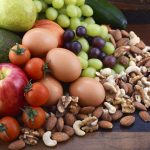
Life is full of choices. Sometimes so many that we can feel overwhelmed.
And when it comes to fitness and health, there seem to be a million options and choices to be made. From exercise routines, to diets that promise next day results or plans and fads that say you will achieve your dreams with just a click of a button.
You could spend hours even days reading about the many myriad of ways to gain weight, lose weight, build muscles or get healthier, and still come out the other side without a clue.
But it doesn’t have to be that way. Getting healthy and making the right nutritional choices for your body shouldn’t be difficult. In fact it really is a simple matter that just involves a bit of self reflection and taking the time to understand what foods will work with you and help your body move forward towards weightloss.
First things first we need to look at the reasons why we overeat or indulge in a few too many snacks. Why are we eating in between meals? Are we hungry due to skipping meals, snacking because we are bored and need to distract ourselves?
Or could is also be down to the types of food we are eating?
The Glycemic Index (GI) is a measurement of carcarbohydrate-containing foods and their impact on our blood sugar.
Carbohydrates are found in many of the foods we eat, from the obvious bread, pasta and potatoes to sugary foods such as fruit, cakes, biscuits as well as some vegetables.
The energy from carbohydrates is important for fueling our bodies, but carbohydrates also raise glucose levels. The glycaemic index shows how quickly each food affects your blood
sugar (glucose) level when that food is eaten on its own.
Now this might all sound a bit complicated but it is really very simple. While all carbohydrates raise glucose levels in the blood, the slower a carbohydrate is digested the slower it release energy, meaning that you will be fuller for longer and less likely you are to overeat or snack.
And the opposite is true of high GI foods – the faster a carbohydrate is digested, the quicker your glucose levels will rise in the blood, causing blood sugar levels to rise dramatically.
Your body reacts by producing insulin to bring the blood sugars back down and making your body think it’s low on sugar, so you start to feel hungry again extremely quickly.
Low GI foods and good carbohydrates take time for your body to break down, taking longer to enter your blood and thus delivering more consistent energy and keeping you more more satisfied and staving off those cravings for snacks in between meals.
Foods with a GI of more than 70 are called ‘high-GI foods’ as they trigger a rapid rise in blood sugar. A GI of between 55-69 are ‘medium-GI foods’ as they trigger a moderate increase and foods with a GI below 55 are ‘low-GI foods’ as they have a minor impact on blood sugar.
Now I’m not saying that all low GI foods are healthier and you should only eat them but by making low-GI food choices as part of a healthy balanced diet you will be making a step in the right direction towards better health.
And you shouldn’t just focus on the GI of foods, without looking at other aspects, your diet will become unbalanced which could lead to weight gain (making it harder to control your blood glucose levels). It’s important to think about the balance of your meals, which should be low in saturated fat, salt and sugar and contain plenty of fruit and vegetables.
Eating low-GI foods like wholegrains, beans, nuts and vegetables as part of a balanced diet will help release energy slowly, helping to prevent sugar highs and afternoon slumps and cravings for sweet snacks.
By opting for foods with a low-GI you will be helping your body to digest food at a much slower rate, and thus your body will not only feel fuller for longer, you’ll have more energy in the day and your body will work to burn off more fat.
